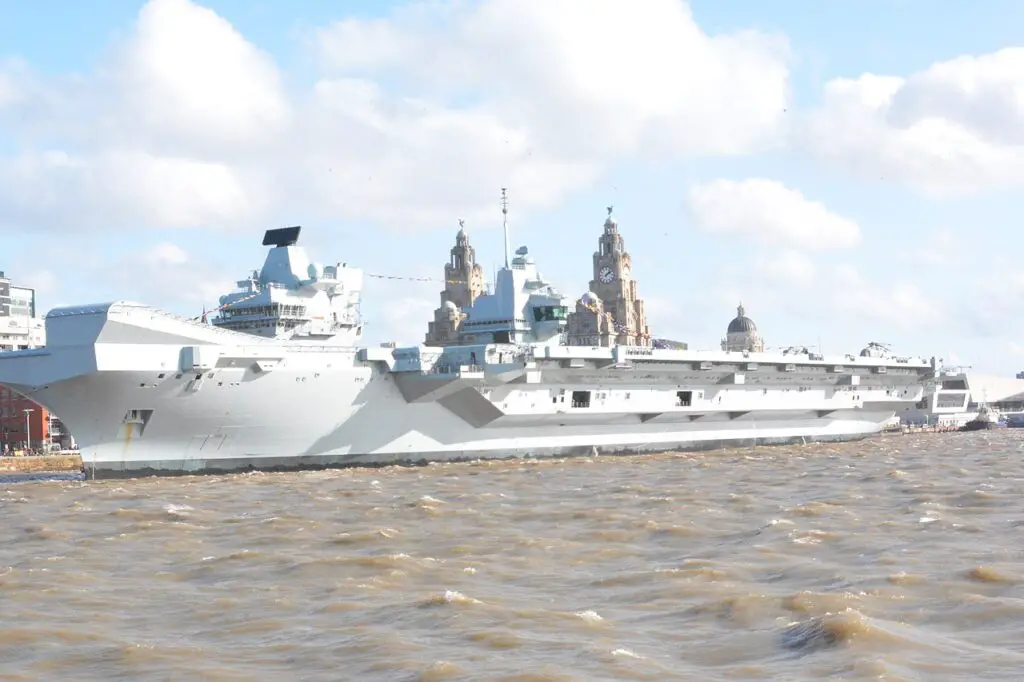Recently, the British aircraft carrier HMS Queen Elizabeth conducted patrols with allies off the coast of Norway and in the North Atlantic region. According to some, this is a method for the United Kingdom and its allies to “demonstrate effective military power” to Russia.
However, the “HMS Queen Elizabeth” aircraft carrier carried only eight F-35B fighter jets during this significant deployment, raising concerns about its military capabilities.
“HMS Queen Elizabeth” began its autumn deployment
Since 2021, it is for the first time the ‘HMS Queen Elizabeth’ is leading a carrier strike group in practice manoeuvres in the waterways of Northern Europe. The operation was carried out with the Joint Expeditionary Force of the United Kingdom and other NATO partners.
The “HMS Queen Elizabeth” aircraft carrier strike group’s participation in Finnish led Exercise RUSKA has two primary objectives:
As part of a coordinated combat system, the primary objective is to practise collaborative operations with other combat forces. The aircraft carrier of the “HMS Queen Elizabeth” class can typically carry approximately 30 F-35B fighter aeroplanes. In the complex maritime conditions of the North Atlantic, F-35B fighter aircraft must participate in the anti-submarine and air defence operations of the entire carrier strike group.
The second objective is to deter Russia strategically. The F-35B is a stealth combat platform, and by approaching the Russian coastline in the North Atlantic, the United Kingdom intends to practise launching surprise attacks on Russian Northern Fleet bases and infrastructure using stealthy carrier-based aircraft.

Why only carry 8 F-35B aircraft?
According to reports, the “HMS Queen Elizabeth” aircraft carrier had as much as two-thirds of its deck space empty during this deployment, transporting only eight F-35B fighter jets due to a significant reduction in British Air Force (and Navy) fighter jets in recent years.
This situation highlights the British military’s budget constraints and inadequate naval training.
It is essential to note that the F-35B aircraft carried on the aircraft carriers of the British Navy belong to the Royal Air Force and are typically trained on land bases. When the carrier is deployed and requires carrier-based squadron training, they only fly to the carrier. The British could not transport more than eight aircraft due to financial constraints.
In addition, the F-35B’s design is more complex and prone to technical problems than conventional fighter aircraft. F-35B carrier operations require extensive training for British Royal Air Force pilots.
HMS Prince of Wales, the second aircraft carrier of the British Navy, recently conducted its first fixed-wing unmanned aircraft takeoff and landing experiments while traversing the English Channel.
Due to a lack of carrier-based aircraft, testing unmanned fixed-wing aircraft on the “HMS Prince of Wales” represents a new effort to expand its mission capabilities. The “HMS Prince of Wales” carrier carries more carrier-based helicopters for personnel transport and fire support missions. Using unmanned fixed-wing aircraft for takeoff and landing on carrier and supply missions is a new experiment.
After undergoing technical modifications, these unmanned fixed-wing aircraft can perform reconnaissance missions and can be equipped with light munitions to engage mobile maritime targets as well as ground and island targets.
Declining British Naval Strength
The United Kingdom has been more isolated in the international community due to “Brexit,” it must establish its prior international standing in a proactive and even assertive manner to regain it.
To aid the United Kingdom in restoring its standing as a “genuine global actor,” some British politicians suggested several years ago that military sites be established in areas such as the South China Sea and the Caribbean.
The British Navy has a tough time achieving what is known as “global deployment.” There is a sense of inadequacy regarding its current naval forces alone, and this sentiment is widespread.
The United Kingdom can maintain the foundation of its military might by retaining huge destroyers and frigates, large aircraft carriers propelled by conventional methods, and strategic nuclear submarines; nevertheless, the state of its equipment is problematic.
The United Kingdom can “create advanced weapons but not sustain them” because nuclear submarines and Type 45 destroyers have experienced various problems. The aspiration of the United Kingdom to display worldwide influence and proclaim its “presence” is nothing more than a pipe dream if enough finance is not provided.
